Artist Spotlight
Shannon Yates makes art that is not about perfection; but rather about self-expression
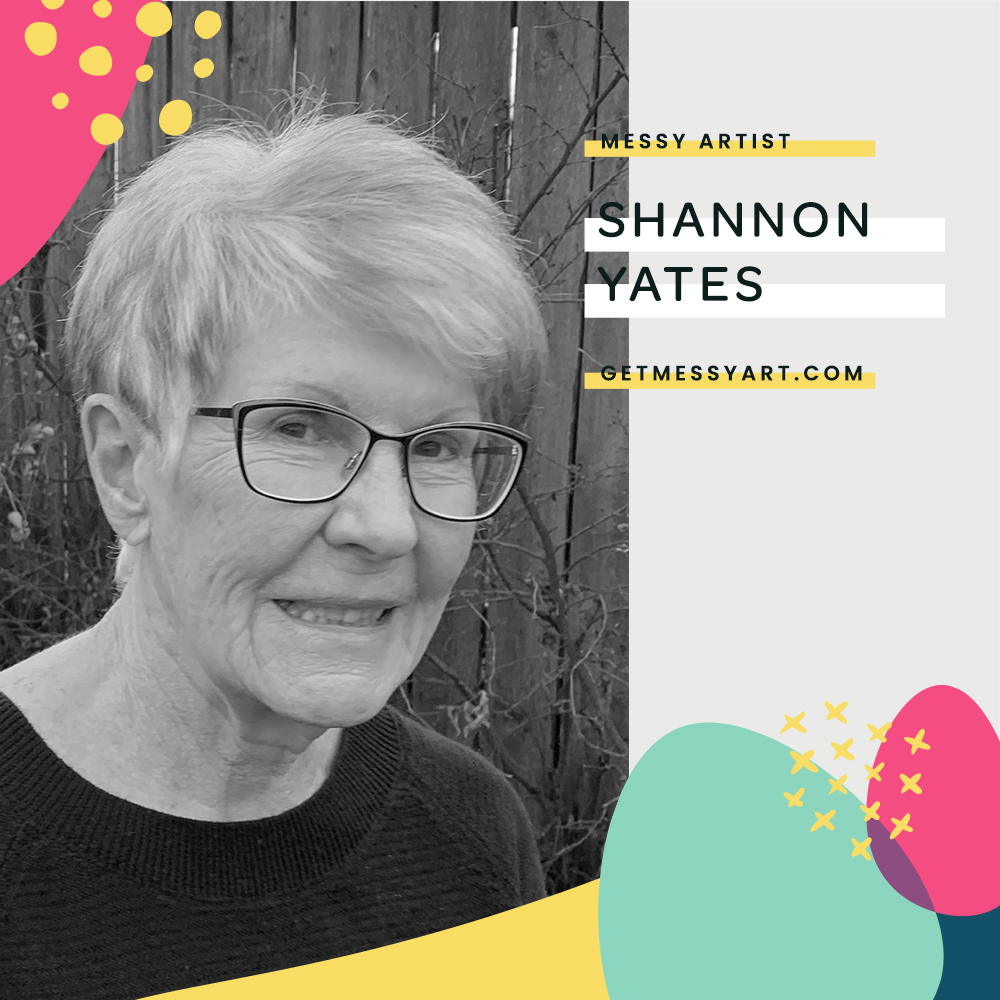
After 40+ years in education/counseling, Shannon has made a few unsuccessful attempts to fully retire. However, her undying desire to reap the pleasure from playing with paint and words in her studio, and digging in her garden led her to make more time to do both.
What is art journaling to you?
Without a doubt, to me, the process of art journaling provides a conduit for my thoughts and feelings to flow onto the page in some form. Usually, the form tells a story or records a memory. Without thinking much about colours, it seems I naturally gravitate to colours that help me tell my story at the time. Creating with paint, paper and words soothes my soul. It provides balance in my life between everyday life and work routines and the abandonment of ‘have to’s’ that I experience when I play in my studio.
What does community do for your art?
Community strengthens my commitment, connection, and confidence.
How do you live a creative life? How do you incorporate journaling into that?
The seeds to live a creative life were sown by my mother many decades ago. Although a very busy woman, mother, teacher, wife, volunteer, she always made time to use her hands in the production of art. Her art came in the forms of sewing, knitting, crocheting, embroidering, fabric painting, keeping a journal filled with newspaper and magazine clippings, sketches, and so on.
Her influence on my living and working in the United Arab Emirates and Mexico generated curiosity for me to explore many art forms throughout my life. To me, the foundation for all art is in the design, composition, texture, colours, and ‘culture’ of the art. Where and how we live, our traditions and history play a significant part in art of all kinds.
I feel that I unconsciously learned about this through observation, learning and practice. More and more, I see and feel these influences in my art journaling.
What does your creative space look like? Where do you journal?
I feel very privileged to have a dedicated space for my studio. The window over my work table allows me to bring nature inside with a glance. Years ago, I found a traditional drafting table that measures 2 1/2 ft x 5 ft. It is the most treasured piece of furniture in my studio. It continues to provide a firm surface for ‘acting’ despite pain and glue spills, and knicks and gouges.
Do you have creative routines?
Early morning when all is still, is my favourite time to play in my studio. I do a few stretches while my coffee is brewing. If the weather is warm, I take a stroll around my garden and appreciate the beauty. Next, I settle in my studio; find some favourite classical music with a good cuppa java, I start where I left off or begin something new.
What is your favourite art journal page that you’ve ever made and why?
My favourite art journal pages are those when I look back at them, I feel the emotion portrayed through the art when I created it. This is one of them.
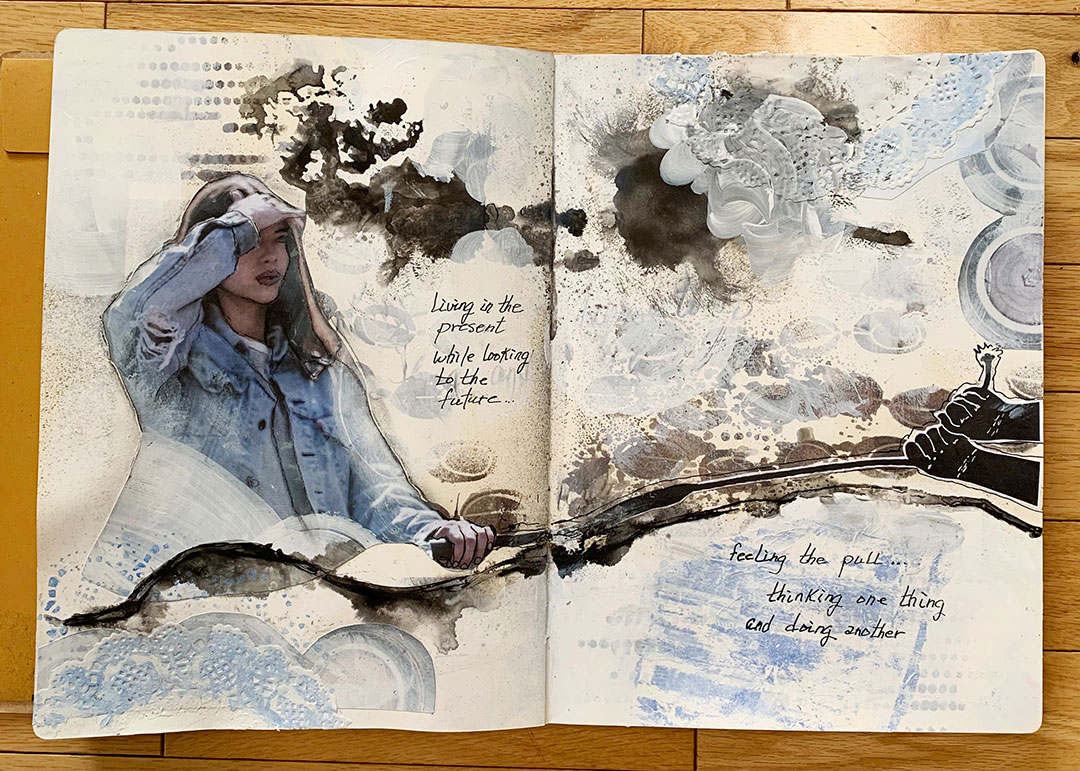
What is your biggest barrier to creating? And how do you overcome that hurdle?
At times, the flood of ideas interferes with deciding what to create. Rather than get caught up in the swirling of ideas, I have learned to stop; write them down; choose one, and get at it!
Have you ever made something you don’t like? What did you do?
For sure, I’ve made art that I’m not particularly fond of. I try to turn it into a learning experience. Instead of discarding it, I study it for what I don’t like. Sometimes, I can make it into something that is more favourable, and other times, I’ll paint over it and start new.
Have you ever been through artist block? How did you return to your work?
In my early years of art journaling, I rarely experience a dry well of creativity. However, as I become a more seasoned art journal, I more frequently came to my studio with no focus. I discovered that tucked away in my mind was a nagging feeling that by now, I should have a particular style of art journaling. Once I accepted that I don’t have a ‘signature’ style and likely never will because of how I approach art, I rarely experience an artist block.
How has Get Messy impacted your creativity?
I find there is a direct, positive correlation between the frequency of making art and my connection to the Get Messy community. It is a one-stop-shop; everything I need to create art is in one place.
For example, I can fill my cart with a Season or two or all of them. I can stop off at a library and pick up a few classes; listen to a podcast or simply browse. I can get on board with the weekly challenges that are full of deliciousness. I can stop over at the forums with a cup of java and participate in a conversation or start one. I can grab my art journal and join a hangout. The choices are endless. Thank you, thank you to all us shoppers; to those who continually fill the shelves with new inspirational inventory, to those who work so hard being the front end to bring us so much choice and joy!!

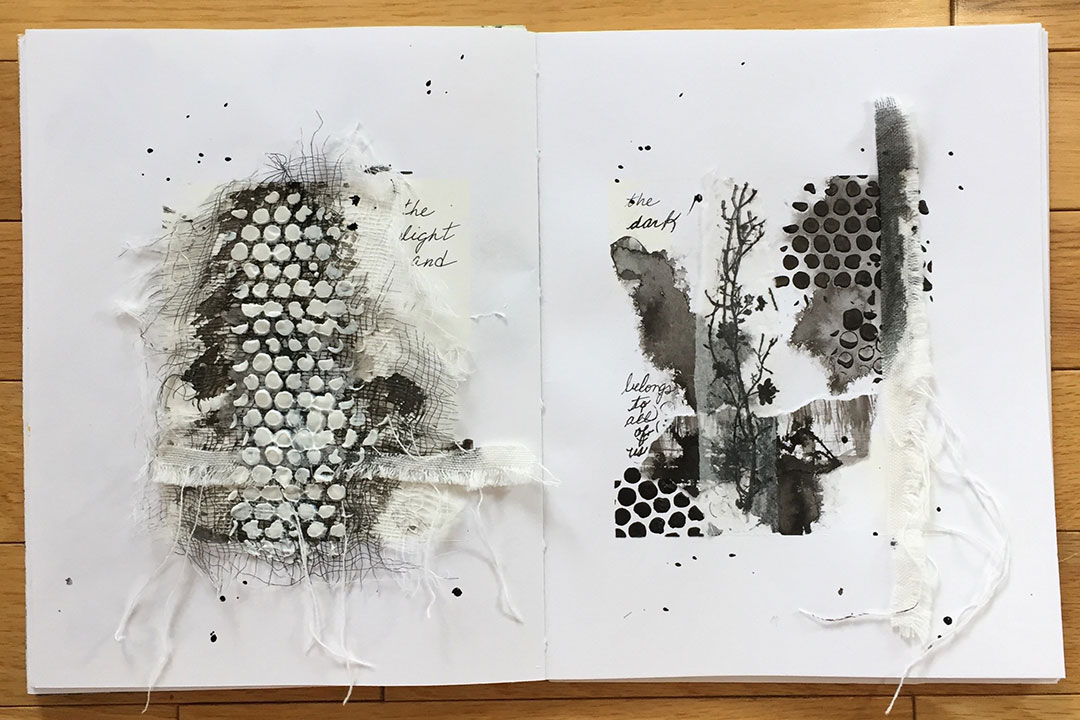
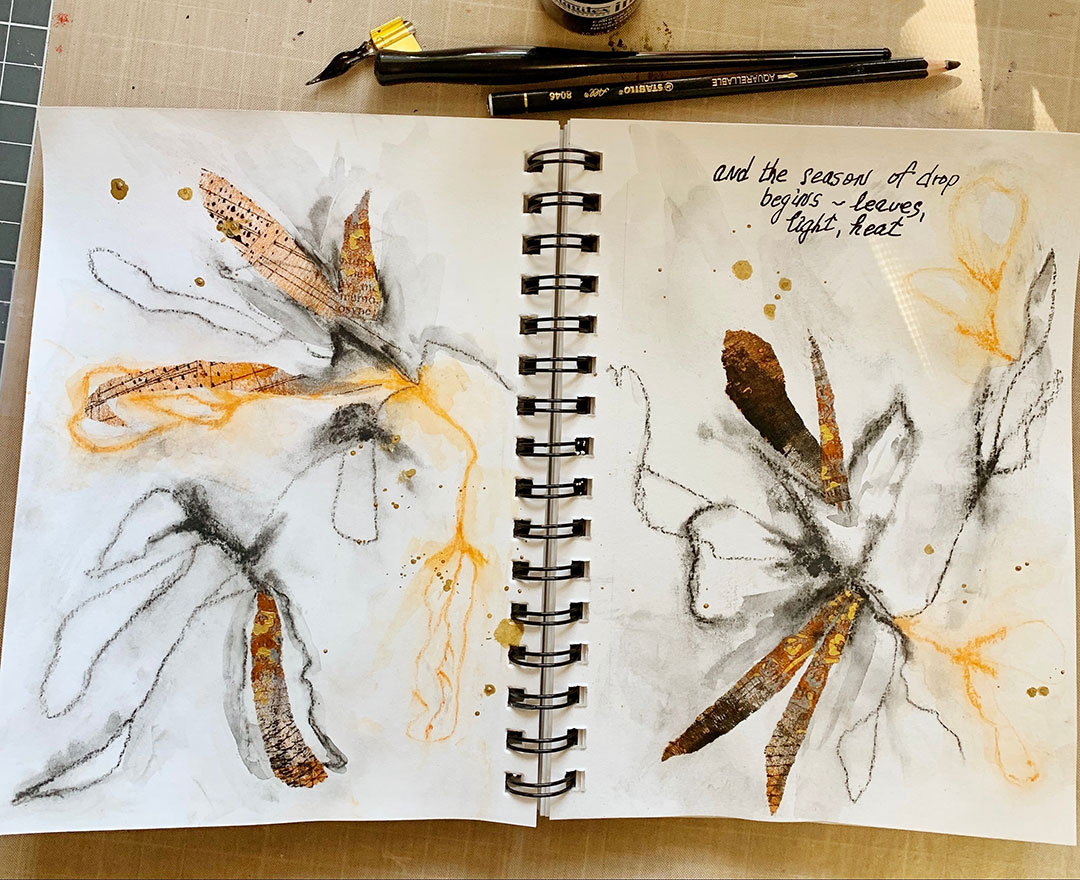
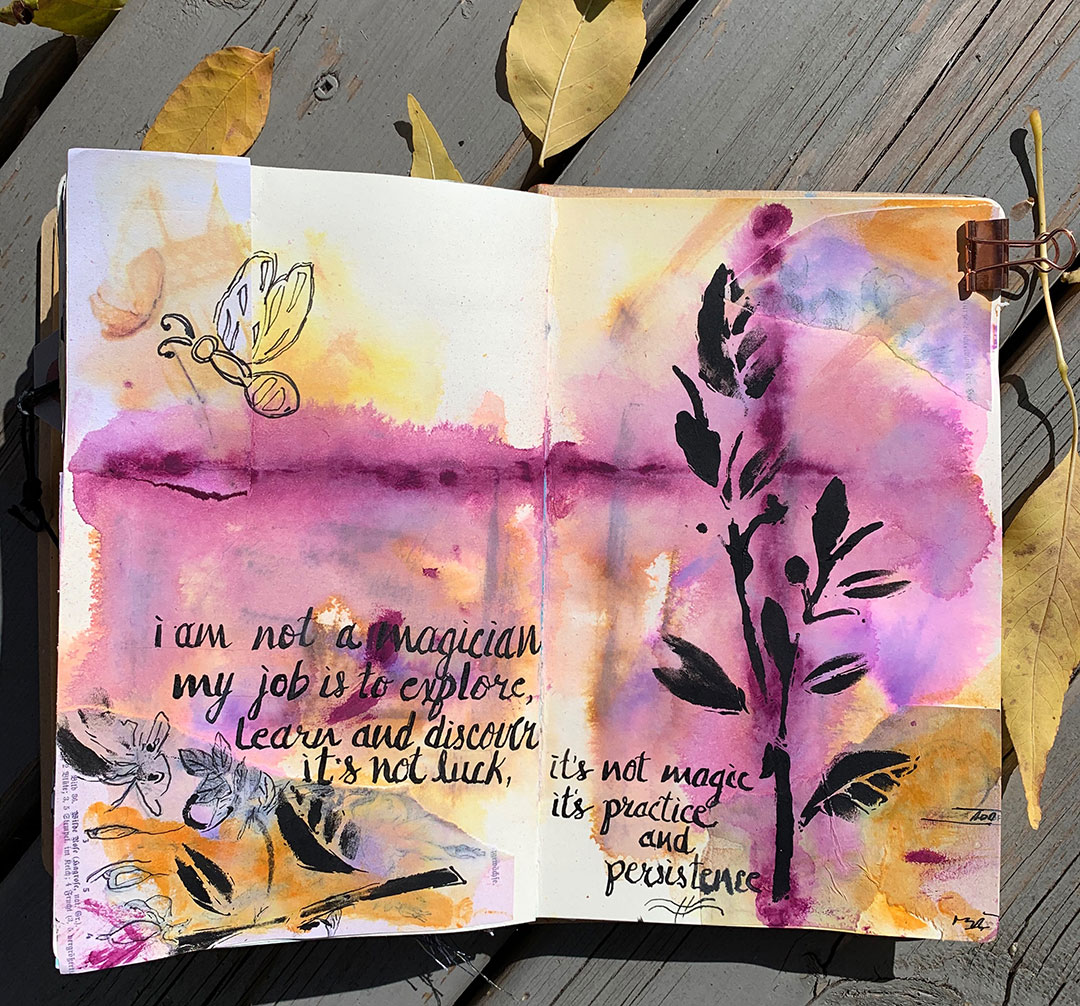

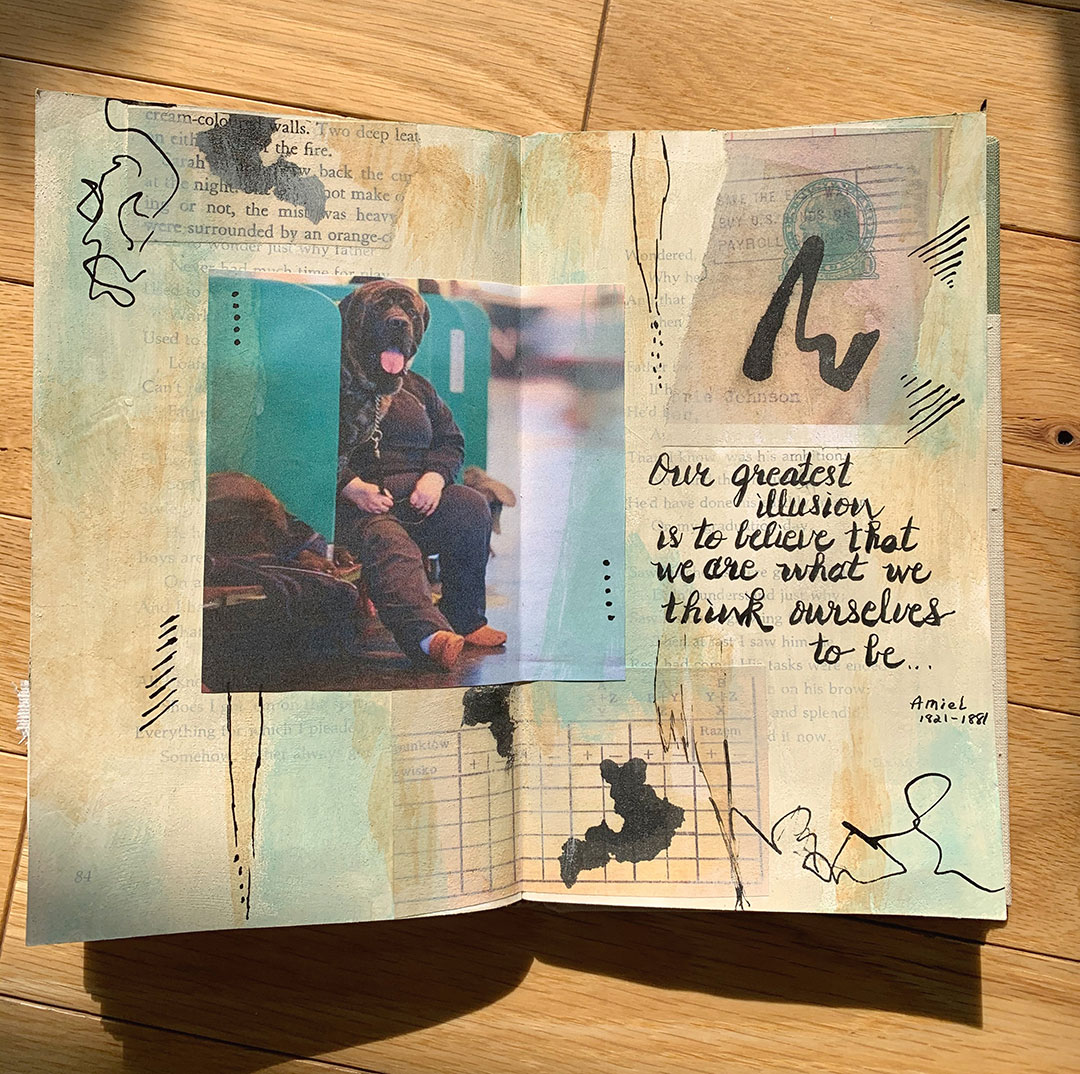


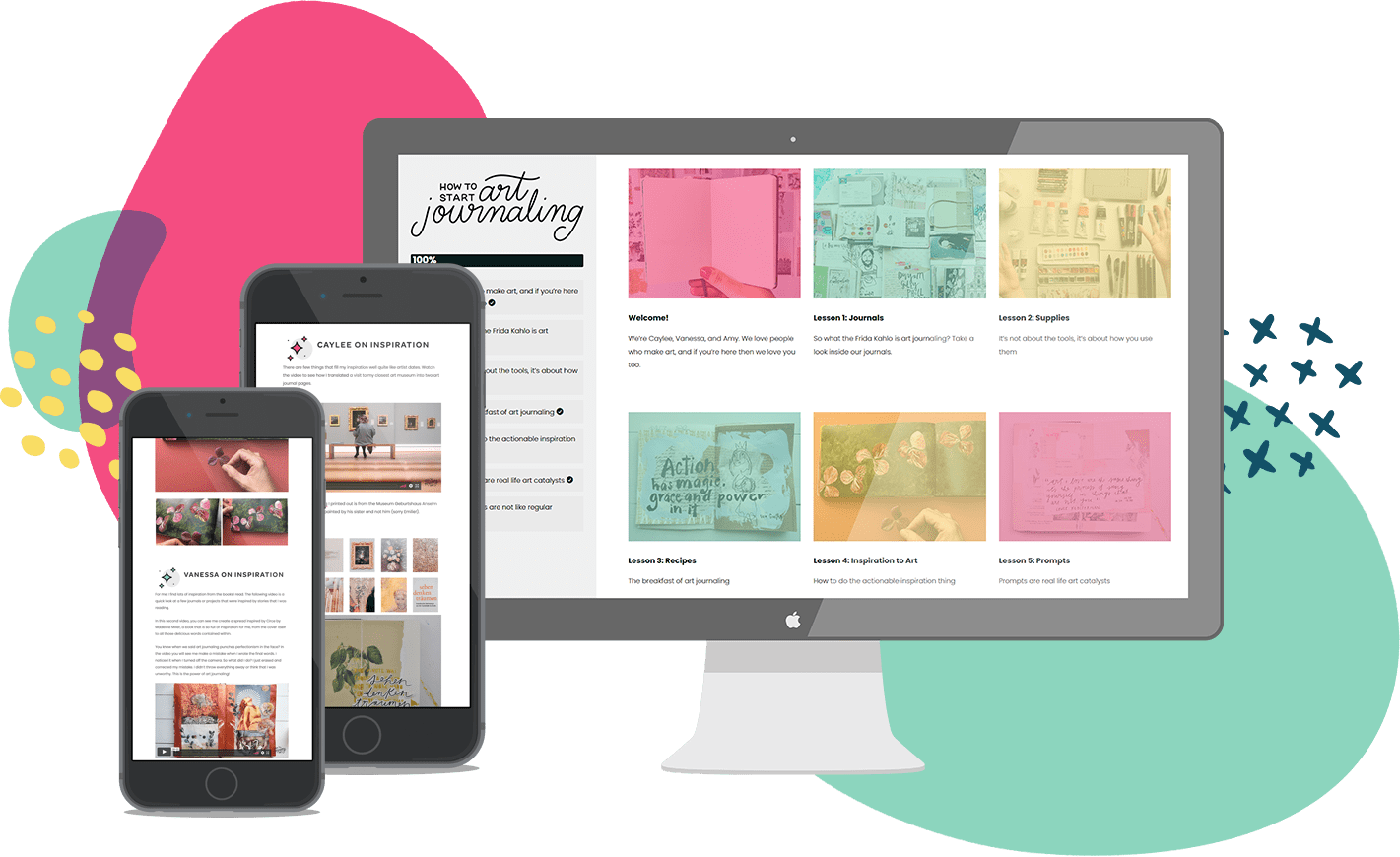
✨ Free class for creatives ✨
In How to Start Art Journaling, we’ll walk you through the art of art journaling, including how to start doing (🙌) and make your very first art journal page (even if you’ve never even opened an art journal before).
What journal do you use?
My first preference is to use journals I’ve made; these can be junk journals or those made with heavy weight mixed media paper. My second preference is the Dina Wakeley journals. They are sturdy and the paper is of good quality to handle mixed media.
What is your one *must have* supply?
Acrylic paints in all the primary colours are part of nearly all my art. With a colour wheel and free color mixing classes on youtube, I can mix a plethora of colors.
What do you make when you don’t know what to make?
Always, I have a stack of collage papers and geliprints, I grab a handful and glue them
What is the most important (non-tool) thing to your creative practice?
Variety of music — classical, opera, jazz, folk, oldies.
What’s the best art advice you’ve ever received?
‘Let your art flow from your heart.’
Once I realised that techniques, inspiration from others, and my environment only augment what my heart is trying to express, my art became less forced.
Advice to new art journalers:
‘Art is not about perfection; it is about self-expression’
There is no one right way to art journal. Take a few minutes and right in your art journal what captured your interest in art journaling. Was it curiosity? Was it a particular artist/art journal? Do you love playing with paints and paper? Last, limit your supplies. I can tell you from experience, you will likely never use all the supplies that are available for purchase. Too many supplies can become a hindrance rather than an advantage.
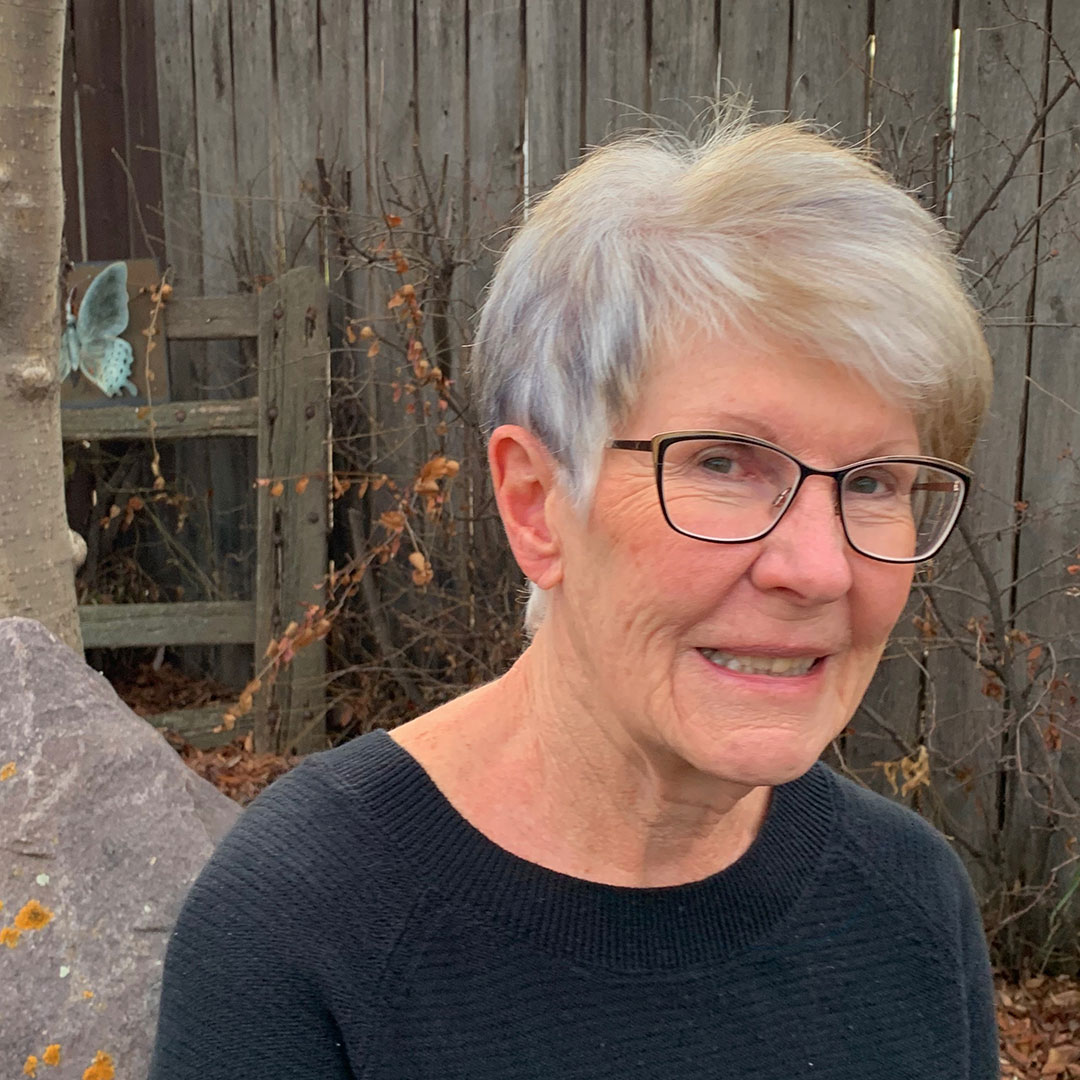
Shannon Yates
After 40+ years in education/counseling, Shannon has made a few unsuccessful attempts to fully retire. However, her undying desire to reap the pleasure from playing with paint and words in her studio, and digging in her garden led her to make more time to do both.
